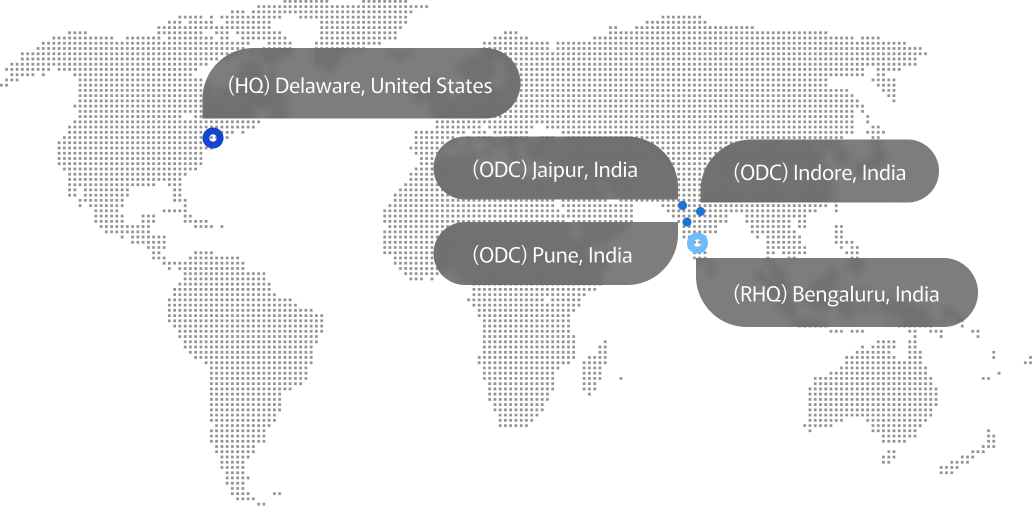
Boost Your Sales with SAP SD: Simple Insights and Strategies
SAP SD (Sales & Distribution) is a powerful ERP module that supports businesses in managing the entire sales cycle, from customer inquiries to invoicing and payment. With SAP SD (Sales & Distribution), organizations can achieve streamlined workflows, enhanced customer satisfaction, and effective sales tracking. Advayan, among the leaders in SAP SD (Sales & Distribution) services, uses this technology to assist businesses in optimizing their sales processes, making it a critical tool for competitive advantage in today’s fast-paced markets.
What is SAP SD (Sales & Distribution)?
SAP SD (Sales & Distribution) is a central module within the SAP ERP suite dedicated to handling sales transactions, pricing, billing, shipping, and customer data. Integrated with other SAP business solutions like Materials Management (MM) and Financial Accounting (FI), SAP SD (Sales & Distribution) enables a seamless flow of information across departments, helping companies improve sales processes and enhance customer satisfaction.
1. SAP SD (Sales & Distribution) Sales Order Processing
- Sales Order Lifecycle: The Sales Order Lifecycle in SAP SD (Sales & Distribution) tracks the journey of an order from creation through fulfillment. SAP SD (Sales & Distribution) allows sales teams to manage inquiries, quotations, and contracts efficiently, enhancing order accuracy and customer satisfaction.
- Types of Sales Documents: SAP SD (Sales & Distribution) provides various sales document types, including inquiries, sales orders, contracts, and scheduling agreements. These documents support organized order management and help prevent errors, ensuring a smooth sales cycle.
2. SAP SD (Sales & Distribution) Pricing and Taxation
- Pricing Procedures: Pricing procedures in SAP SD (Sales & Distribution) allow businesses to apply different price strategies based on customer groups, product types, and special conditions. This flexible pricing structure helps companies to stay competitive while maximizing profitability.
- Tax Calculation Methods: SAP SD (Sales & Distribution) integrates tax engines to calculate taxes based on jurisdiction, product type, and customer location. This ensures compliance with tax regulations and provides precise tax calculations.
3. SAP SD (Sales & Distribution) Shipping and Logistics
- Delivery Processing: SAP SD (Sales & Distribution)’s Delivery Processing ensures timely dispatch of products by overseeing picking, packing, and shipping tasks. Integration with Warehouse Management (WM) optimizes inventory and improves order fulfillment efficiency.
- Transportation Scheduling: Transportation Scheduling allows companies to plan shipping routes and optimize delivery modes, reducing logistical costs and improving delivery times.
4. SAP SD (Sales & Distribution) Billing and Invoicing
- Billing Document Types: SAP SD (Sales & Distribution) offers various billing document types, such as invoices, credit memos, and proforma invoices, ensuring flexibility and accuracy in billing processes.
- Invoice Generation: With SAP SD (Sales & Distribution), invoice generation is automated based on sales order completion and integrates seamlessly with Financial Accounting (FI) to streamline revenue tracking.
5. SAP SD (Sales & Distribution) Credit Management
- Credit Control Areas: Credit Control Areas in SAP SD (Sales & Distribution) allow businesses to set credit limits for customers, ensuring financial stability by managing credit exposure efficiently.
- Risk Management Strategies: SAP SD (Sales & Distribution)’s risk management capabilities include real-time credit exposure tracking and overdue payment alerts. This enables businesses to minimize lousy debt risks by adjusting credit terms based on customer creditworthiness.
SAP SD (Sales & Distribution) Integration with Other SAP Modules
- Integration with SAP MM (Materials Management): SAP MM supports real-time inventory tracking, ensuring accurate order fulfillment.
- Integration with SAP FI (Financial Accounting): SAP SD (Sales & Distribution)’s integration with FI enhances financial accuracy and transparency in revenue reporting.
- Integration with SAP PP (Production Planning): SAP SD (Sales & Distribution) and PP integration allow sales teams to coordinate orders with production schedules, optimizing supply and demand alignment.
Technical Components of SAP SD (Sales & Distribution)
Here’s a closer look at the technical components that make SAP SD (Sales & Distribution) an invaluable tool for managing sales processes effectively. Each element in SAP SD serves a specific function, from tracking customer data to ensuring compliance in international transactions. Let’s explore these components in detail:
- Master Data (SAP-SD-MD): Tracks essential customer and product data, providing accurate information for sales processing.
- Essential Functions (SAP-SD-BF): Manages output and text control, streamlining communication across departments.
- Sales (SAP-SD-SLS): Includes various sales document types, such as contracts and agreements, to facilitate effective order management.
- Shipping (SAP-SD-SHP): Optimizes delivery through route determination and freight calculation.
- Transportation (SAP-SD-TBA): Manages logistics execution, ensuring timely and cost-effective delivery.
- Foreign Trade (SAP-SD-FT): Ensures compliance with import/export regulations, simplifying cross-border transactions.
- Billing (SAP-SD-BIL): Supports revenue recognition through flexible billing plans and document generation.
- Sales Support (SAP-SD-CAS): Tracks leads and manages sales activities to support continuous sales growth.
Now that we’ve detailed these technical components, it’s clear that SAP SD (Sales & Distribution) equips organizations with a comprehensive suite of tools. Each element contributes to a smoother sales process, from data accuracy to efficient logistics, enabling businesses to operate with greater efficiency and precision.
How SAP SD (Sales & Distribution) Benefits Organizations
When it comes to leveraging technology to drive sales and operational success, SAP SD (Sales & Distribution) stands out as a comprehensive tool. Its capabilities go beyond simple order management, offering benefits that transform the efficiency, customer satisfaction, and global reach of a business. Let’s dive into some key advantages that SAP SD (Sales & Distribution) brings to organizations:
- Boosting Sales Performance: SAP SD (Sales & Distribution) accelerates sales cycles by automating tasks, reducing manual errors, and enabling real-time order tracking. For instance, consumer goods companies report a 20% reduction in order-to-cash cycles by using SAP SD (Sales & Distribution).
- Enhancing Operational Efficiency: Automation through SAP SD (Sales & Distribution) decreases manual intervention, improves turnaround times, and boosts productivity. Reports show that companies using SAP SD (Sales & Distribution) experienced a 25% improvement in order-processing efficiency.
- Improving Customer Satisfaction: SAP SD (Sales & Distribution)’s real-time tracking capabilities help businesses manage customer expectations by providing timely updates on order status, thus fostering customer loyalty and trust.
- Facilitating Global Trade: With SAP SD (Sales & Distribution) compliance tools, organizations can handle international trade requirements seamlessly, expanding market reach while adhering to local regulations.
Together, these benefits highlight the value SAP SD (Sales & Distribution) brings to any organization. From boosting productivity to supporting international growth, SAP SD’s features make it easier for companies to operate smoothly, satisfy customers, and drive sustained growth.
Actionable Strategies for Empowering Sales Teams with SAP SD (Sales & Distribution)
Empowering a sales team with the right tools and training can be transformative for any organization, and SAP SD (Sales & Distribution) offers features that enhance both individual and team performance. Here’s how SAP SD (Sales & Distribution) can be strategically used to boost sales effectiveness and drive success:
- Comprehensive Training and Skill Development: Ongoing SAP SD (Sales & Distribution) training equips sales teams to utilize its features fully, from order management to analytics. Leveraging SAP’s online learning resources can enhance skill levels and keep teams updated on best practices.
- Optimizing Sales Processes: SAP SD (Sales & Distribution) enables workflow automation, reducing manual errors and making the sales process faster and more efficient. With automation, sales teams focus more on customer engagement rather than repetitive tasks.
- Customer-Centric Approaches: SAP SD (Sales & Distribution)’s customer analytics allows teams to tailor interactions based on buyer behavior, building better customer relationships and enhancing satisfaction.
- Performance Monitoring and Incentives: By setting Key Performance Indicators (KPIs) and rewarding high performers, SAP SD (Sales & Distribution) enables a performance-driven culture that keeps sales teams motivated and aligned with business goals.
- Integrating SAP SD (Sales & Distribution) with CRM Systems: Integrating SAP SD (Sales & Distribution) with CRM systems provides a unified view of customer interactions, allowing teams to capitalize on cross-selling and upselling opportunities, enhancing both sales and customer experience.
These strategies illustrate how SAP SD (Sales & Distribution) can empower sales teams by providing the tools and insights necessary for high performance. By focusing on continuous learning, process optimization, customer-centricity, and effective monitoring, organizations can maximize the impact of their sales teams and achieve sustainable growth.
Conclusion
SAP SD (Sales & Distribution) is an essential tool for managing the sales and distribution cycle efficiently. Through SAP SD (Sales & Distribution), businesses can streamline sales cycles, optimize pricing, and provide prompt delivery—all contributing to higher revenue and customer satisfaction. By partnering with Advayan, companies can leverage SAP SD (Sales & Distribution)’s full capabilities to boost sales performance, empower teams, and foster long-term business growth.





